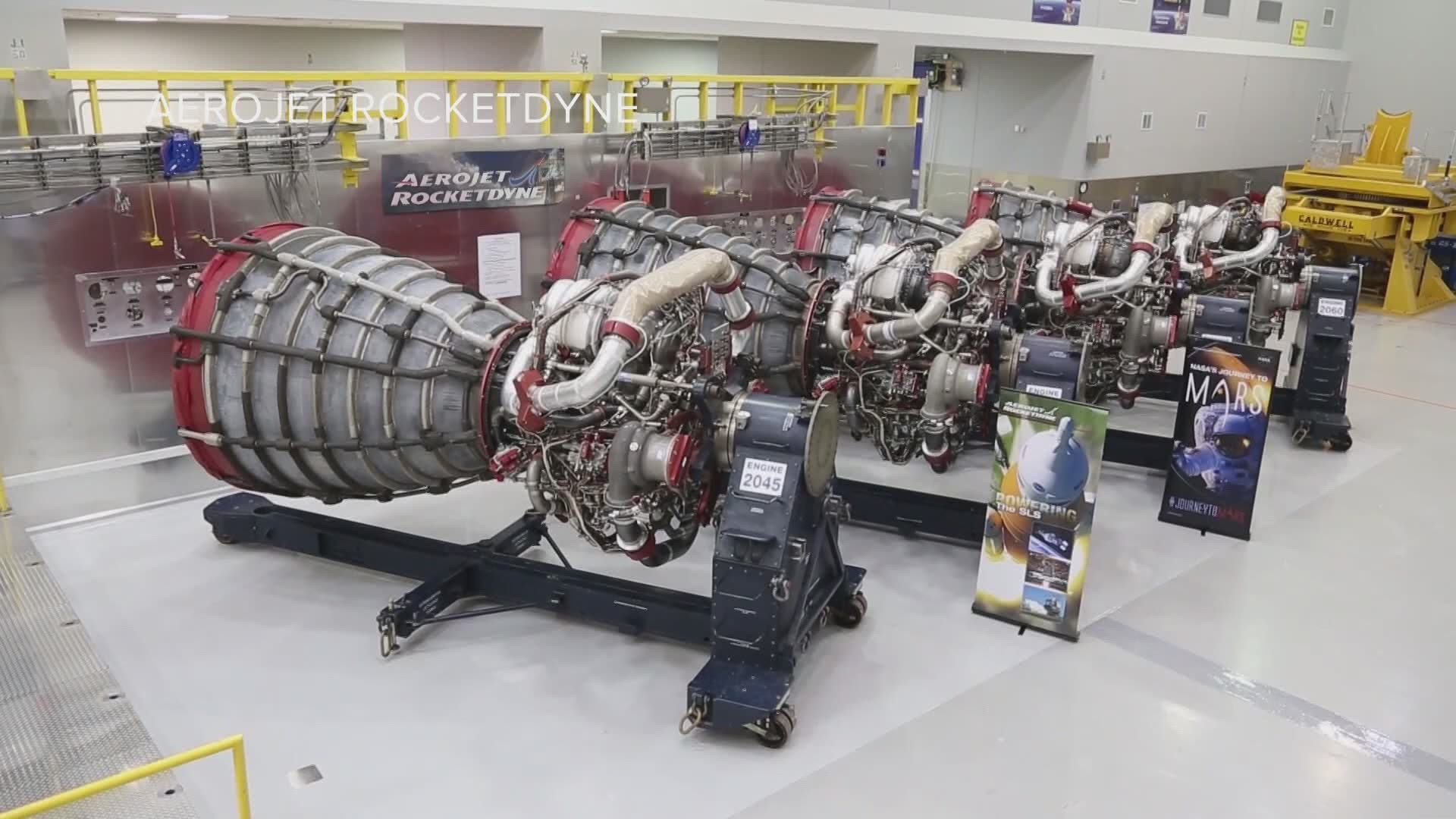NEW ORLEANS — This Saturday, NASA will test the most powerful rocket engines in the world right next door in Mississippi.
NASA plans to send the first woman and next man to the moon in 2024 as part of the Artemis Program.
“We’re all excited to be part of this mission,” said Gary Benton, Director of Safety and Mission Assurance at Stennis Space Center in Mississippi.
Benton has been preparing years for this Saturday, the rockets final test before heading into deep space.
“Working for years to get the facility ready and to get the rocket tested,” he said.
Stennis prepared its B2 test stand to test NASA's Space Launch System, SLS.
“It’s the biggest test we’ve done at Stennis Space Center in the last 40 years,” Benton said.
SLS will be the world’s largest and most powerful rocket.
“It can travel farther and faster than any other rocket and because of its capacity, it can carry things like large aperture telescopes and deep space exploration probes, so it can enable more science sooner,” said Jeff Zotti, RS-25 Engine Program Director, Aerojet Rocketdyne. “It’s a key milestone for the program, it’s a key milestone for NASA.”
Saturday, NASA will test the SLS core stage, which was partially built in New Orleans East at NASA Michoud Assembly Facility. All four RS-25 engines will fire simultaneously, just as during an actual launch. They won’t go anywhere, but will generate 1.6 million pounds of thrust.
“Expect it to be loud and powerful,” Zotti said. “NASA predicts you can hear it as far as 60 miles out so if you’re in New Orleans, there’s a chance you could hear it Saturday.”
It won’t be loud enough to have any damaging effect.
“It’ll sound like thunder rumbling,” Benton said.
If all goes as planned, the engines will head to Kennedy Space Center in Florida next month where an un-crewed launch will happen as early as this November. NASA then plans to send people to the moon and eventually Mars.
Due to COVID-19, there will be no public test viewing opportunities. NASA is targeting a two-hour test window that opens at 4p.m. Live coverage will begin at 4:20 p.m. on NASA Television.
► Get breaking news from your neighborhood delivered directly to you by downloading the new FREE WWL-TV News app now in the IOS App Store or Google Play.

